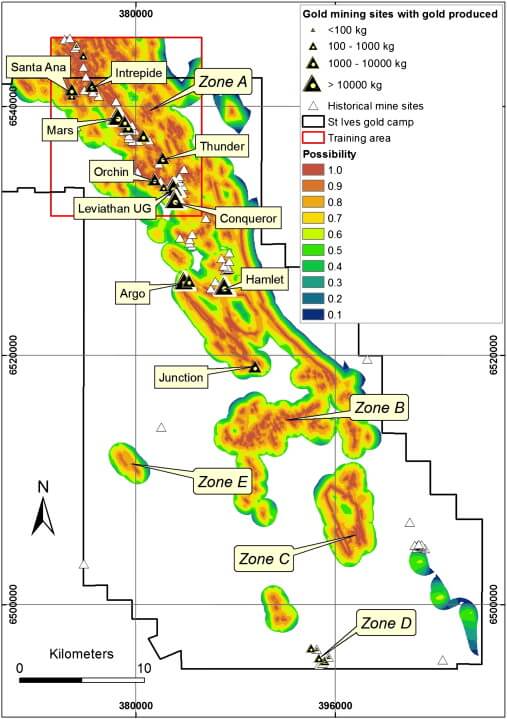The complete study of faulting belongs to mining rather than to prospecting. But there are surface results of importance to the prospector. As explained, faulting is due to the breaking of the rock under strain; there has been displacement at the same time, so that the two sides of the break do not fit. If the break crosses an ore-body the two parts of the ore-body no longer join.

A fault is a break or fracture with displacement of the rock along the fracture. The strike is the direction of the break, measured horizontally. The dip is the slope of the break, measured at right angles to the strike. The hanging wall is the upper wall of the fault. The footwall is the lower wall of the fault. A strike-fault has a strike parallel to that of the ore-body. A dip-fault has a strike about at right angles to the strike of the ore-body. An oblique fault has a direction between that of a strike fault and that of a dip fault. The slip is the distance between the broken ends of the ore-body, measured along the fault. When measured at right angles to the strike of the ore body as seen in the outcrops, it is called the offset. A normal fault is one in which the hanging wall side seems to have moved downwards. A reverse fault is one in which the hanging wall side seems to have been pushed up.
Direction of Movement
The direction of movement can often be traced by drag ore which has been drawn along the break, but drag ore is sometimes found in both directions from the end of a faulted ore-body, owing probably to more than one movement. Grooves or striae on the fault face are another indication of direction.
Breaks may be sudden, as when they cause earthquakes, or may take a long time. The ore-body may be curved at the break, and the curve then points in the direction of movement. This curving is probably caused by a very slow movement. In studying the effects of faults on ore-bodies, surface appearances only are included here. What are rocks below and above a fault called?
Strike Fault
Fig. 128 represents a block of country rock supposed to be cut so as to show the

vein not only at the surface, v V1 but underground V1 V2 V3. Suppose a break takes place along F1F and the right-hand part slips down. The ore body then shows, as indicated by the black band (Fig. 129). If the country is then worn down to a level surface (Fig. 130), the ore body does not show on the surface, unless a little drag ore has been left along the break F1F.
Dip Fault
 Figs. 131, 132, and 133 show the result of a dip fault followed by erosion. The appearance of the vein at the surface is as if the country had moved horizontally, Fig. 133, so as to separate the broken ends. This may sometimes have taken place, but the diagrams show how a downward movement of one side followed by erosion may cause the same appearance.
Figs. 131, 132, and 133 show the result of a dip fault followed by erosion. The appearance of the vein at the surface is as if the country had moved horizontally, Fig. 133, so as to separate the broken ends. This may sometimes have taken place, but the diagrams show how a downward movement of one side followed by erosion may cause the same appearance.
https://www.youtube.com/watch?v=1r7iDzC7vjw[/fusion_builder_column]
